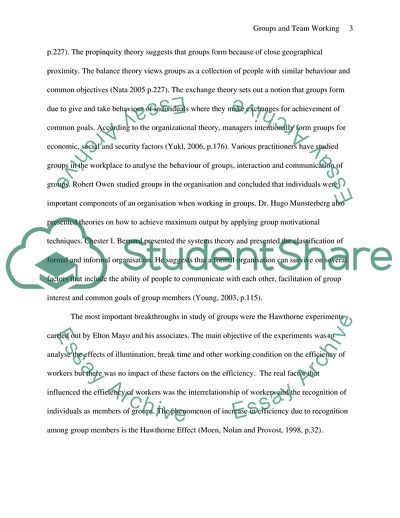Cite this document
(Groups and Team Working Essay Example | Topics and Well Written Essays - 1750 words, n.d.)
Groups and Team Working Essay Example | Topics and Well Written Essays - 1750 words. https://studentshare.org/sociology/1729331-teamworking-can-lead-to-individuals-conforming-to-group-norms-critically-evaluate-the-impact-this-can-have-on-the-individual-and-the-organisation
Groups and Team Working Essay Example | Topics and Well Written Essays - 1750 words. https://studentshare.org/sociology/1729331-teamworking-can-lead-to-individuals-conforming-to-group-norms-critically-evaluate-the-impact-this-can-have-on-the-individual-and-the-organisation
(Groups and Team Working Essay Example | Topics and Well Written Essays - 1750 Words)
Groups and Team Working Essay Example | Topics and Well Written Essays - 1750 Words. https://studentshare.org/sociology/1729331-teamworking-can-lead-to-individuals-conforming-to-group-norms-critically-evaluate-the-impact-this-can-have-on-the-individual-and-the-organisation.
Groups and Team Working Essay Example | Topics and Well Written Essays - 1750 Words. https://studentshare.org/sociology/1729331-teamworking-can-lead-to-individuals-conforming-to-group-norms-critically-evaluate-the-impact-this-can-have-on-the-individual-and-the-organisation.
“Groups and Team Working Essay Example | Topics and Well Written Essays - 1750 Words”. https://studentshare.org/sociology/1729331-teamworking-can-lead-to-individuals-conforming-to-group-norms-critically-evaluate-the-impact-this-can-have-on-the-individual-and-the-organisation.


